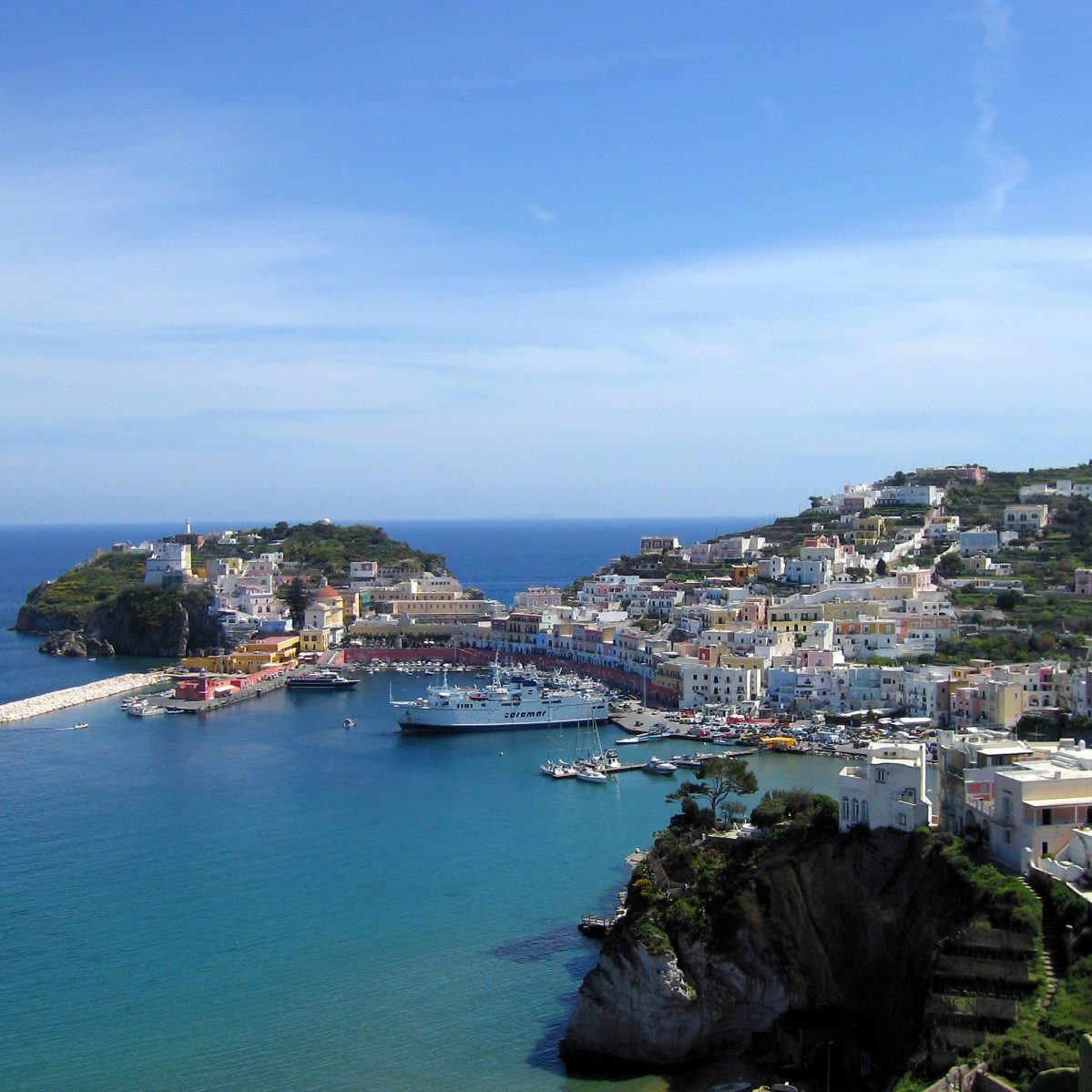ITALY – Pontine Islands
Pontine islands have been known to be inhabited since the civilization’s onset; Neolithic remnants and first bronze age obsidians were found hare although reliable life traces go back only after the final Roman victory over the Volsces on 338 B.C.
Ventotene harbor, as well as Pilatos’ cove, used at Ponza to breed Moray fishes and other rare species, both dug in the tuff rocks, and Chiaia di Luna with its tunnel connecting the village to the beach through impressive cliffs, are all remainder of those days. Madonna point mansion, with its fish pond now nearby the cemetery, is also a remarkable visit spot. The nowadays harbor and surrounding Ponza’s area lay-out, were built by Francesco Carpi at the end of the eighteen century, based on a project by Antonio Winspeare. This is the starting point for a tour to the archipelago.
Here, divers will experience magical emotions in a totally unspoilt environment. Their spectacular and bright colours give the islands a particular charm and a surprising beauty also due to the wide variety of small coves, bays or inlets and to the different choices of fascinating walks through the history and nature of the islands that makes Pontine ‘s cruising area a top destination for a yachting holiday in Italy.
Ponza can be reached from the close ports of Anzio (Rome) or Gaeta; Naples is not so far (22 miles from Ischia). This island can be best savored by circumnavigating it. Starting from the harbor and coasting southward along the Donna promontory where the water entrances to the Pilatus’ cove are located, the Roman villa can be seen. Further south the Madonna cliffs, the Ulysses’ cave and the long Scotti rocky wall are sighted together with Calzone Muto cliff just before the impressive Guardia promontory 280 meters high. Chiaia di Luna is located behind the lower Fieno point. This is a beautiful route safe also for night navigation when riding the west winds one seeks shelter into the bay.
One additional surprise occurs at the bay entrance when one find himself in front of this beautiful beach surrounded by suggestive multicolored cliffs. Coasting further Faraglioni mountain, Feola cove sheltered by a breakwater partially suitable for docking and with 2-4 meters water depth, is reached. After making good the sharp Corte point, the navigation continue into the Water cove, so called after the small port used by the water-tanker supplying the island.
From the following Papa point to the extreme northern island end, the coast line becomes more and more irregular until the strait between Ponza and Gavi islet. The eastern side offers suggestive seascape views till the natural stone arch called “Spaccapolpi”. Here two majestic coves separated by the “Faraglioni del Parroco” are reached. They are respectively named Inferno and Core coves. Good shelter from the south-west winds can be found at Frontone cove, behind the homonymous point.
The other archipelago inhabited island is Ventotene, with an old Roman port dug into the tuff rock and surrounded by a picturesque village: a night in Ventotene is an experience anyone sailing the Mediterranean cannot miss. When lentils and other local plants blossom in springtime and their flavor can be felt miles away sailing downwind at nighttime, the time has arrived to steer for Ventotene and be taken by its ancient charm. If docking is not available at the old harbor ( Nicholas port ) you can now take advantage at the new marina, sheltered to the est by a breakwater.
Santo Stefano island is about a mile away from Ventotene. The island is two kilometers wide, with an old Borbonic penitentiary built on top, has a peculiar turtle shape. A visit is worth although the premise is closed down.
Parmarola island, considered one of the most beautiful in the Tyrrhenian sea, lies at about six miles from Ponza’s Guardia point. Cliffs and coves with crystal clear waters offer one landing only, which is the harbor cove with a sandy bottom in front of the beach. The only two restaurants in the island provide, in the good season, to the necessities of visitors.
The wildest and pristine of the entire archipelago is without doubt Zannone island, resembling Australia both in shape ( but not size! ) and the rich luxuriant vegetation, a remainder of the forests that were growing in the islands prior to human colonization.
The best period to cruise this area goes from April to October.


